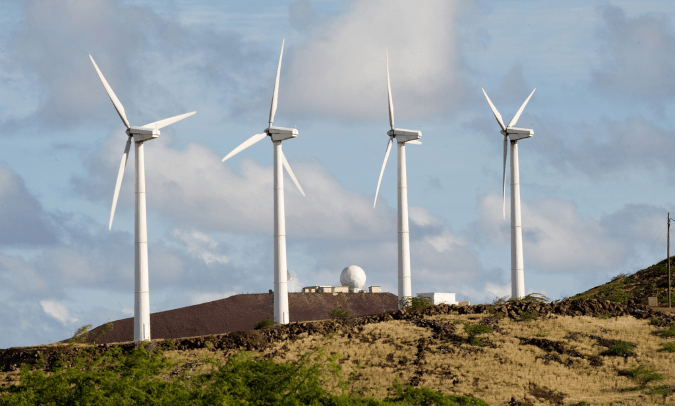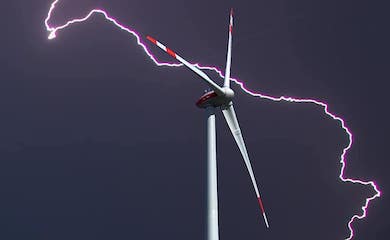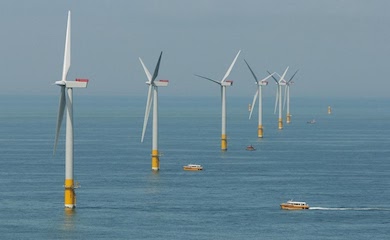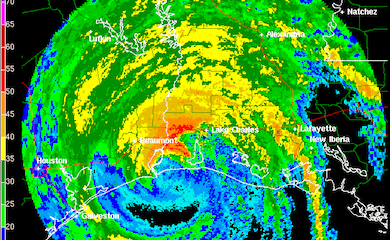If the UK is to come close to meeting Government targets regarding green electricity supply, then wind energy must be more effectively harnessed. Yet wind farm development is often hindered by some of the most stringent radar safeguarding procedures in the world.
At Pager Power, we use our expertise to design individual solutions for wind farm developments, and in this article we examine a variety of technical mitigation options that help us to manage the radar issue for our clients.
Background
Given that the UK faces a significant shortfall in electricity generation capacity, estimated at more than 30GW by 2016, the renewable sector is under pressure to deliver the targeted 8% of the UKs electricity by 2010. Wind power may be the most cost-effective renewable energy technology, but in order to achieve this target, around 3,500 additional modern wind turbines are needed; roughly 2,000 onshore and 1,500 offshore.
Right now, it is estimated that 7.4GW of renewable energy is stuck in the planning system.
The Wind Farm Radar Problem
The UK has some of the most stringent safeguarding procedures for radar in the world, and this often presents a significant obstacle to wind farm development. It is currently estimated that more than a massive 4GW of wind energy in the UK is being prohibited by radar related issues. With more than 150 operational surveillance and landing radars in the UK, and the utilisation of available non-interference sites, the number of wind farms in the range of radars is only set to increase.
There are, however, various technical mitigation options available that can be used to manage the effects that wind turbines can have on radar systems. At Pager Power we have developed a number of creative solutions that have been used successfully by our clients.
Amending the layout and/or reducing the turbine size: Sightlines Application
The anticipated effects on radar can usually be avoided by siting turbines below the radar line of sight or by reducing their tip height. By performing spatial analysis using a bespoke application Sightlines Pager Power can either check the radar line of sight at fixed turbine locations to identify the appropriate tip height, or assess the line of sight to a number of locations in the wind farm area. This allows the identification of both the appropriate siting locations and the remaining available tip heights below the radar line of sight.
Buildings and Forestry: Shielding
Areas of land between the radar and the wind farm may be covered with forest or buildings that could attenuate radar signals. At Pager Power, we can survey potential obstacles, measure their spatial coverage and height and make an assessment of their possible effect on the attenuation of the radar signal. We know from our extensive experience in this field that this is acceptable to many radar operating authorities.
Data Fusion
This refers to the process of combining data from two or more radars on a single display. This can be used to mask an area where one radar suffers interference from the same area covered from an undisturbed radar. This option was used by Pager Power in the case of Whitelee Wind Farm in Scotland.
Surveillance
At Pager Power we have developed our own aircraft monitoring equipment, which allows us to log aircraft activity over a proposed wind development.
All that is required is a local power supply and a suitable location to mount an external aerial. The equipment monitors all aircraft that emit Automatic Dependent Surveillance Broadcast location data.
The collected data is analysed by defined airspace levels above the proposed development in order to consider what traffic is in the vicinity during given time periods. This data is then plotted on charts, which assists in determining air traffic levels and potential impacts on radar systems. The monitoring equipment can also be mounted in our radar survey vehicle.
Fixed radar installations are used for air navigation, air defence marine navigation and the gathering of meteorological data. All can be affected by wind farms, but the biggest issue is interference to primary surveillance radar (PSR), used for air navigation and air defence. Pager Power has radar software that simulates operational radar screens and can show the likely clutter effects that may arise due to a particular wind farm. The screen is configured for the air traffic control unit of interest and the wind farms coordinates are entered. Some typical air traffic movements are also programmed into the system. The simulation then allows air traffic controllers to assess the likely impact of the proposed wind farm on their operations.
Conclusion
Wind turbine interactions with radar are extremely complex, and there are no known models that can adequately predict effects, considering all the significant variables. Different stakeholders have different perceptions of the issues, and there is scope for much subjectivity, adding further complications. The selection of the appropriate mitigation solution(s) should be made on an individual case-by-case basis.
If UK Government targets for renewable energy are to be met, it is imperative to understand the importance of the radar issue with regard to future wind farm development. At Pager Power our expertise and experience allows us to offer individual, state-of-the-art solutions for radar and wind turbine issues.
Image accreditation: “090628-F-538” by Lance Cheung via Flickr / CC BY 2.0 / Image resized from original.




